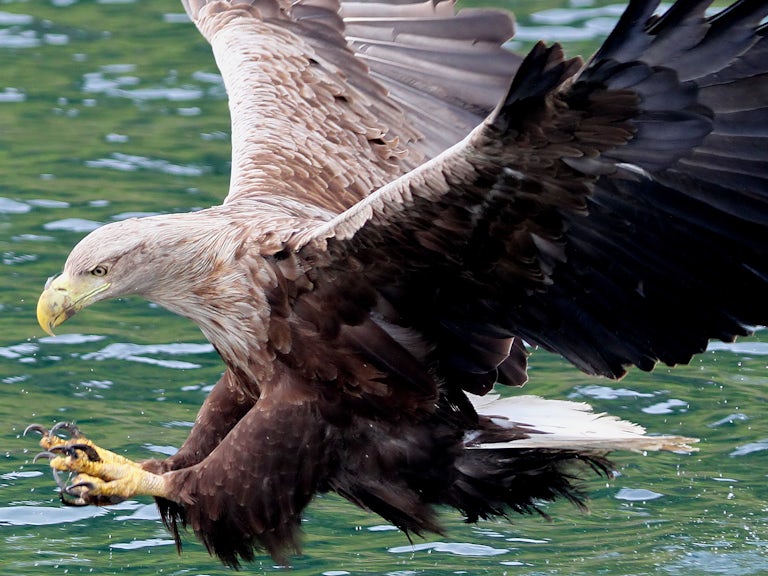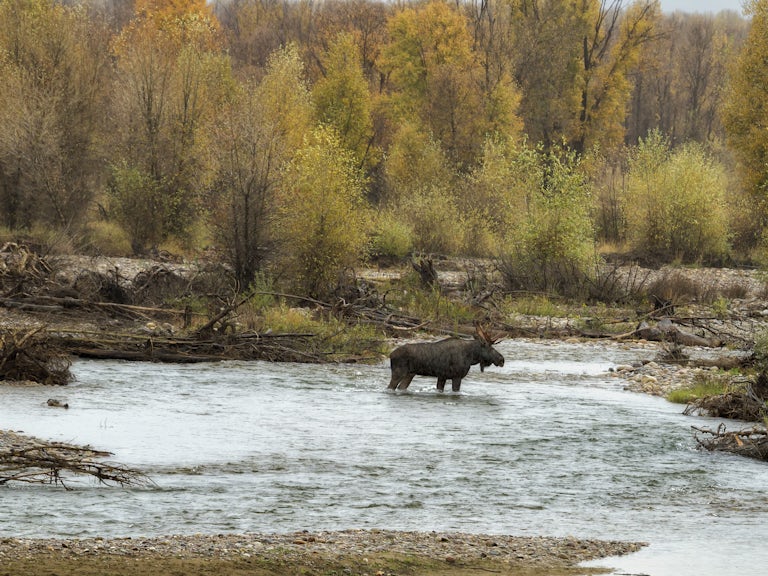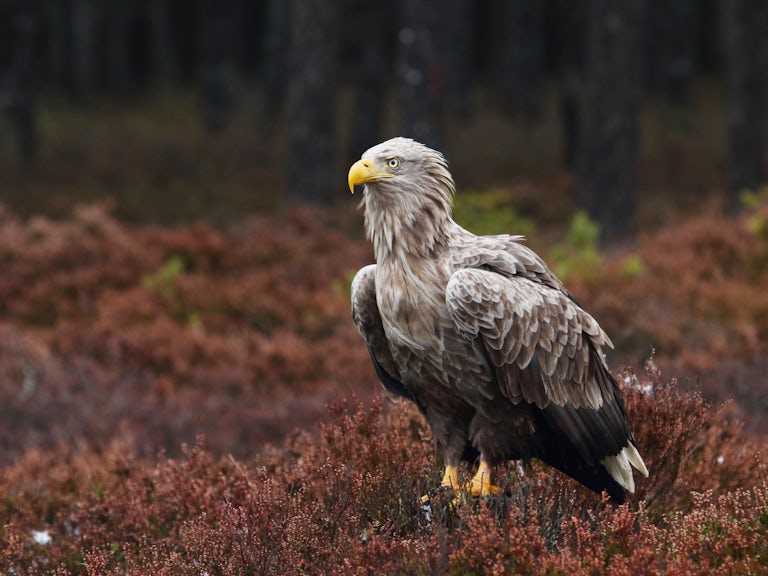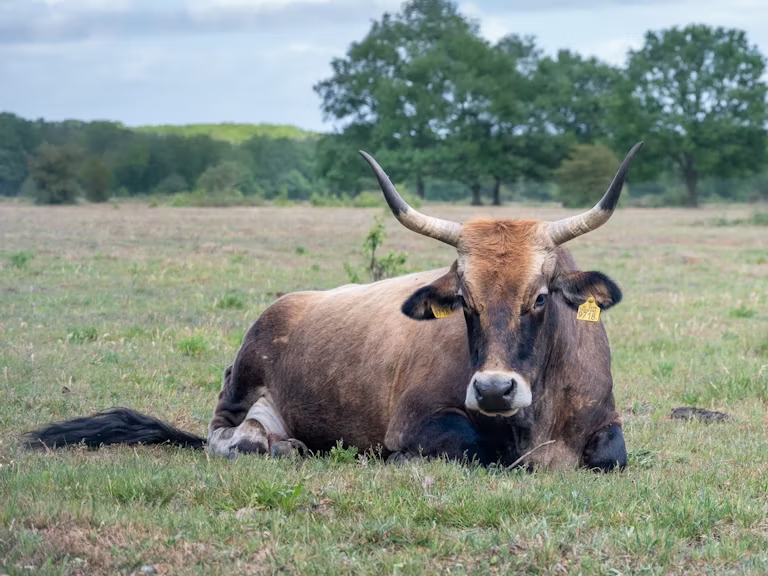Golden eagle
Aquila chrysaetos
Britain’s second-largest bird of prey, this majestic raptor is a population control expert.

How it shapes the landscape
As an apex predator, the golden eagle plays a vital role at the top of the food chain in remote mountainous and open moorland regions by controlling the population of smaller mammals and birds. These skilled hunters tend to prey on small to medium-sized animals such as hares or red grouse, but they aren’t particularly picky.
They’re great at keeping small mammal populations in balance, thus avoiding overgrazing. They swoop in to pick up anything that is too abundant, including rabbits, squirrels and smaller birds, and will even take the occasional fish. They also eat carrion, which helps to recycle nutrients within the landscape.
Where it likes to be
Golden eagles are the ultimate sign of wildness. They don’t like to be disturbed, so build their nests in remote and inaccessible locations, from cliff ledges along the coast to the tops of the tallest trees in mountainous regions. In Britain that means they are most at home in Scotland’s Highlands and islands, where they have space to roam and less disruption from human activity.
Dwarf birch and downy willow trees, which can grow near the summits of mountains, make perfect habitats for golden eagles, but these trees have almost been wiped out in Scotland due to overgrazing by sheep and deer.
How much space they need
Golden eagles mate for life and the pair can cover territories as large as 150 square kilometres. Within this territory they both hunt and nest, often building three or four enormous nests (the biggest nest on record was 4.5m deep) so they have a choice of where to rest after a day of gliding through the skies. They’ll keep returning to these nests, which they maintain for years, adding to the structures with branches, twigs and heather. Golden eagles will generally live between 15 and 20 years, though some have been known to reach the grand old age of 30.

Background story
Widespread throughout Eurasia and North America, golden eagles suffered hugely during the 18th and 19th centuries, first through killing by sheep farmers who – wrongly – feared for their livestock (anything except the youngest lambs are too big for golden eagles to carry off), and then by gamekeepers’ shooting. By 1850 the golden eagle was extinct in England and Wales, surviving in small numbers in the remote Highlands of Scotland.
Even then, they were not safe. In the middle of the century, the use of organochlorine pesticides was causing infertility and eggshell thinning in golden eagles, lowering already slim survival rates of their young (only an estimated 25% survive). The banning of these chemicals and increased conservation efforts have allowed Scotland’s population to slowly recover, but other than a single nest in the Lake District from the late 1960s until the early 2000s, they have so far failed to spread to the rest of Britain.
Can we have them in Britain?
They are already here, but are confined to very limited areas of Scotland and are extinct in England and Wales. Both countries have habitats that could suit golden eagles – the Lake District National Park in England and Eryri National Park (Snowdonia) in Wales have the right mix of mountains and moorlands.
The biggest current threat facing golden eagles is illegal persecution linked to grouse estate management. The second priority is to address the shortage of live prey. The decline in prey has predominantly been caused by changes in the management of deer and sheep.
Wilder national parks would bolster food supplies for golden eagles, and many other apex predators. In the Lake District, where golden eagles last lived in England, Rewilding Network member RSPB Haweswater is showing how new approaches to land management can boost biodiversity and work alongside traditional hill farming. Their hope is that by restoring the landscape it will be fit for eagles once again.
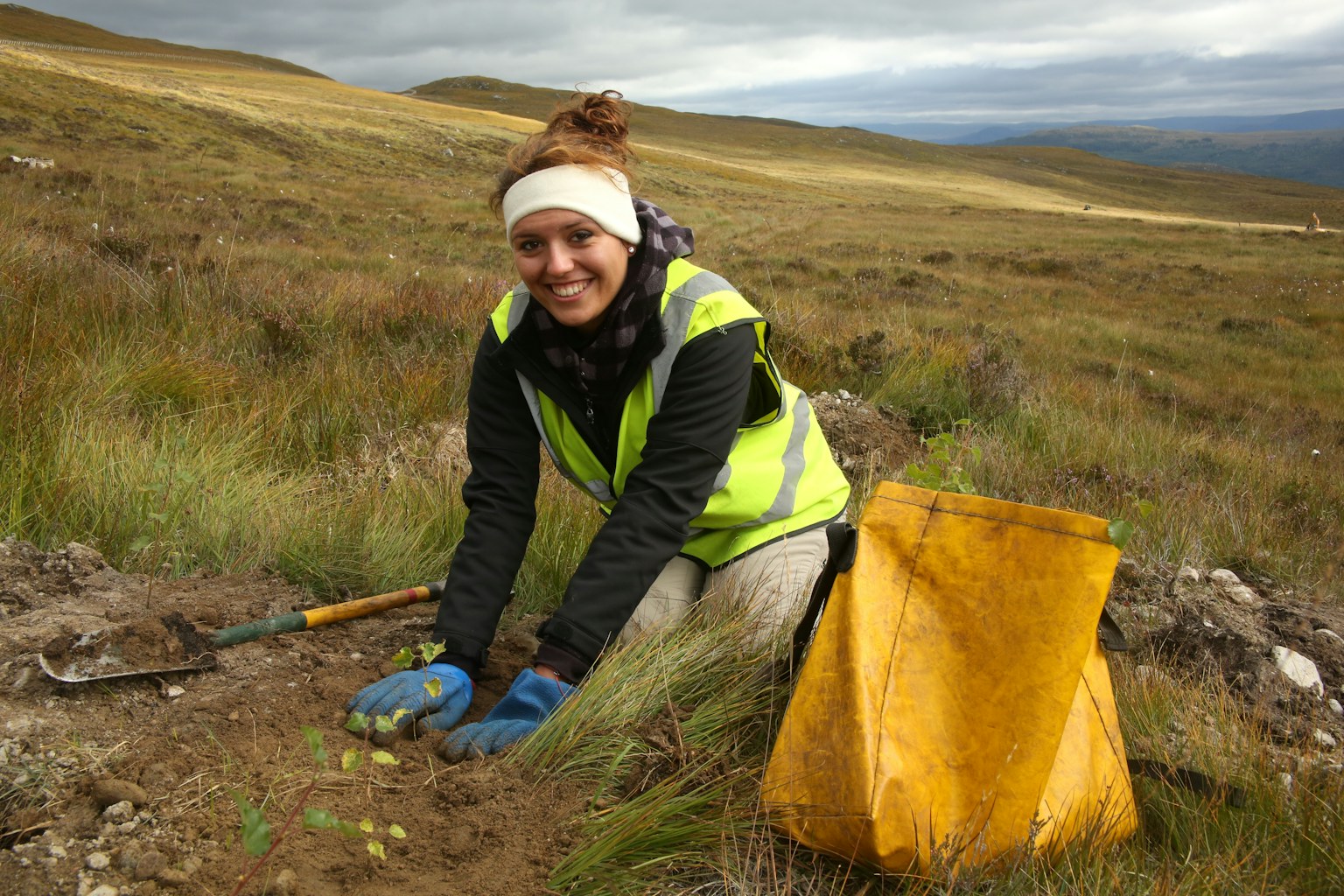
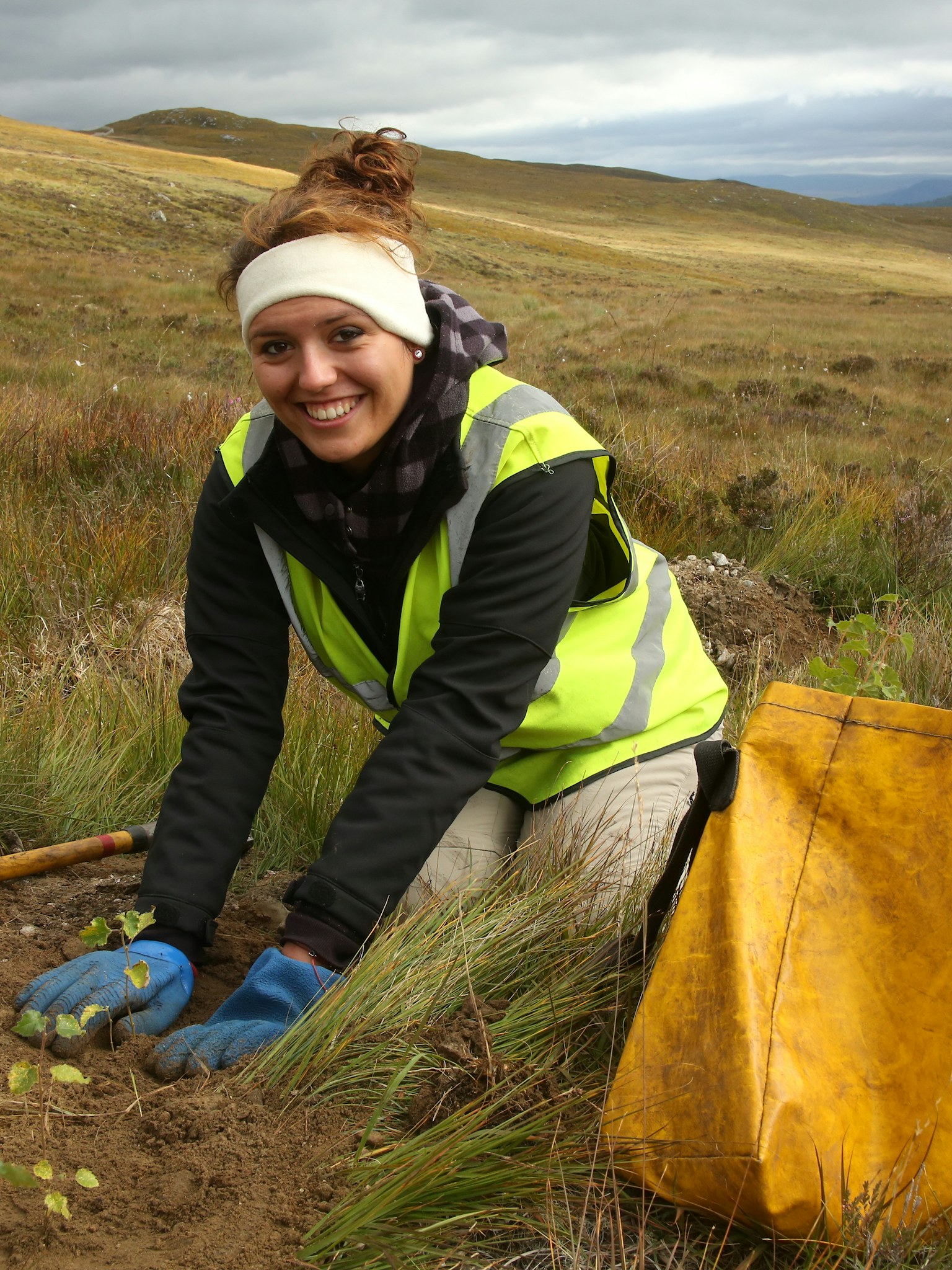
Eagles return to Dundreggan
Discover how rewilding in the Scottish Highlands has brought life back to a depleted landscape, including the formidable golden eagle.
In summary
Britain’s second-largest bird of prey
Extinct in England and Wales
Lives in huge nests in treetops in Scotland
Loves remote, mountainous regions
Brilliant at population control of small mammals
